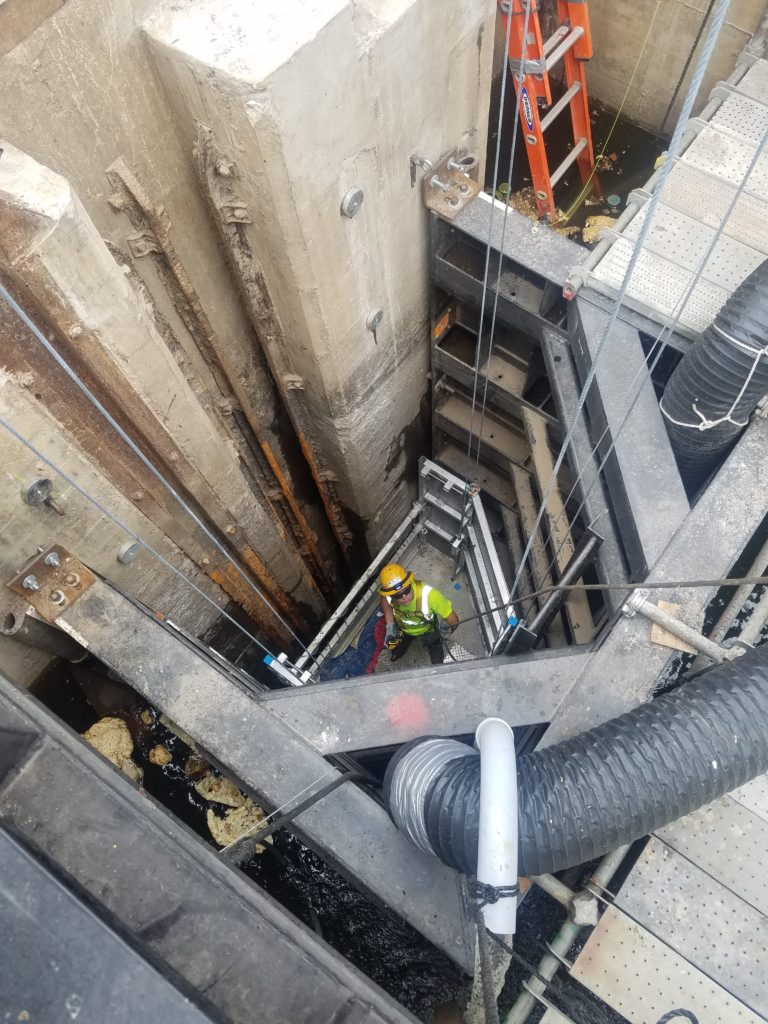The Conowingo Dam is one of the largest non-federal hydroelectric dams in the United States. Positioned over the Susquehanna River in Northern Maryland, this dam has provided power to Baltimore and Philadelphia since 1928 and also serves as a bridge for US Route 1.
Like much of our national infrastructure, the Conowingo Dam was recently deemed in need of considerable non-routine maintenance. This included rehabilitating the trash rack system that sweeps debris up and away from the dam’s intake bays.
The engineering plan to rehabilitate trash racks on the Conowingo Hydroelectric Generating Station incorporated one of the deepest asymmetrical cofferdams ever built or used in the U.S.A.
The 100-foot tall cofferdam structure was required to allow workers access to the full depth of the dam. This roughly C-shaped tube, once installed and dewatered, required a custom suspension platform to safely carry workers through the tube as they replaced each section of track set into the dam’s concrete face. This cofferdam and suspended access system made it possible for crews to work up to 100 feet under water without getting wet.
Working with Crofton Diving Corporation, Sky Climber developed suspended access platforms first as a prototype in 2011 and then again with modifications for actual construction in 2017. Per Kurt Feairheller of Crofton Diving, the access system turned the cofferdam shaft into a “truly workable space.”
The platforms needed to conform to exact specifications within the cofferdam structure, providing ample space for workers and equipment. Other requirements included a guide system, lift mechanisms, and the ability to move the lift system between cofferdam installations. Beyond the basic scope of requirements for the equipment, Sky Climber delivered several system features that added value for the customer.
Design improvements included items that increased safety factors, reduced weight and streamlined installation time. Adopting a rescue configuration for the hoists improved the operating safety and longevity of the system. Replacing guide rails with a wire system made installation easier and swapping out steel for aluminum for several components reduced overall weight.
These modifications drove a final suspended access system that was safer, lighter, easier to install, and simple to use. Sky Climber systems provided safe access for workers for twenty hours a day throughout twenty weeks of construction. Sky Climber is proud to have contributed an unprecedented access solution to a truly unique construction project.

